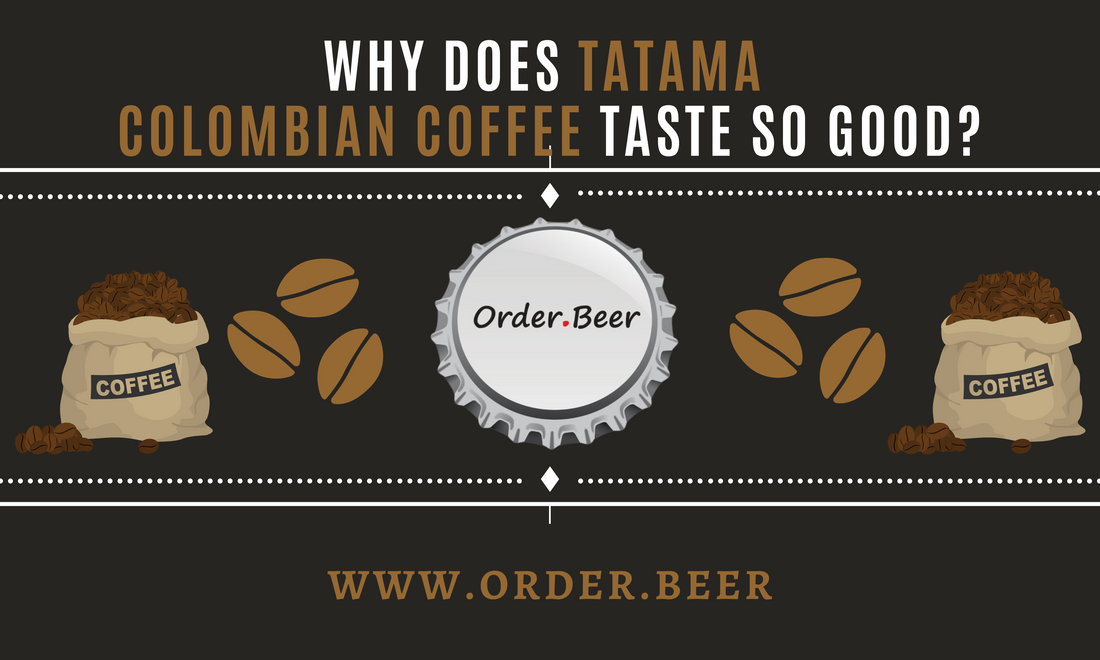
Why does Tatama Colombian coffee taste so good?
Share

Why does Tatama Colombian coffee taste so good?
Colombian coffee is famous worldwide for both its quality and delicious taste; in fact, along with a couple of other countries, Colombia’s coffee is renowned as some of the best in the world. But what, you may ask makes one country’s coffee better than another’s?
Isn’t it all just coffee?
The quick and simple answer is no, and we’ve collated some information to help explain:
In reference to raw coffee, there are three primary factors which determine its quality We delve in with some explanation in the paragraphs below to help determine why each one makes such a key difference when it comes to making this coffee taste so good
Factor One – Climate and Geography
Colombia mountainous terrain and tropical location has just about the perfect geography for growing coffee, a sensitive crop which needs exactly the right conditions to thrive. The richness of flavour for Colombian coffee is distinguished is mainly down to climate, perfect soil and the exact right amount of rainfall.
FACT: Coffee thrives in places with at least 200 centimetres (80 inches) of rainfall per year, as well as in locations where the temperature never falls below freezing
Factor Two - The Growing and Harvesting Process
These factors cannot be underestimated when growing and producing coffee. It’s not enough to have the perfect climate and terrain if your methods of growing and collecting coffee beans are poor or badly executed. The best coffee is grown on steep slopes, surrounded by trees and banana plants, which provide much-needed shade and prevent the beans being scorched by the blistering heat of the sun. Not only this every bean is picked by hand.
FACT: Yes, you most definitely read that last sentence right: each one of the nearly 600,000 coffee producers in Colombia picks every bit of their harvest by hand.
A machine cannot tell the difference between green beans, unripe beans, overripe beans and the ideal coffee cherry. But a human being ‘hand picking and assessing’ can, and the hard work and blistered fingers of tens of thousands of pickers is testament to the hard nature of their work
Factor Three – Coffee Bean Types
There are two different types of coffee bean: arabica and robusta. Colombia, with its perfect terrain and climate, is one of the only countries that produce 100% arabica beans.
FACT: Arabica is widely considered to be the superior bean, and it has a sweeter and lighter taste, as well as less caffeine (approximately half the amount) plus stronger acidic notes.
TATAMA COFFEE STORY – HENRY GOMEZ
The Tatama project started with my desire to support the coffee producing community from my birth town Santuario, Risaralda in Colombia.
I am a third-generation coffee producer and I feel proud of still having the small farm where my 3 brothers and I were born, we are still producing coffee and endeavouring to improve processes and quality. Producing speciality coffee helps to make the farm sustainable, as cultivating coffee for the commercial market farmers only just covers cost of production.
I bring quality coffee from my region to your cup, aiming to benefit the farmers by buying directly and paying a premium for their carefully produced, picked and processed coffee. Guaranteeing a more than Fair Trade price makes coffee production sustainable and profitable.

